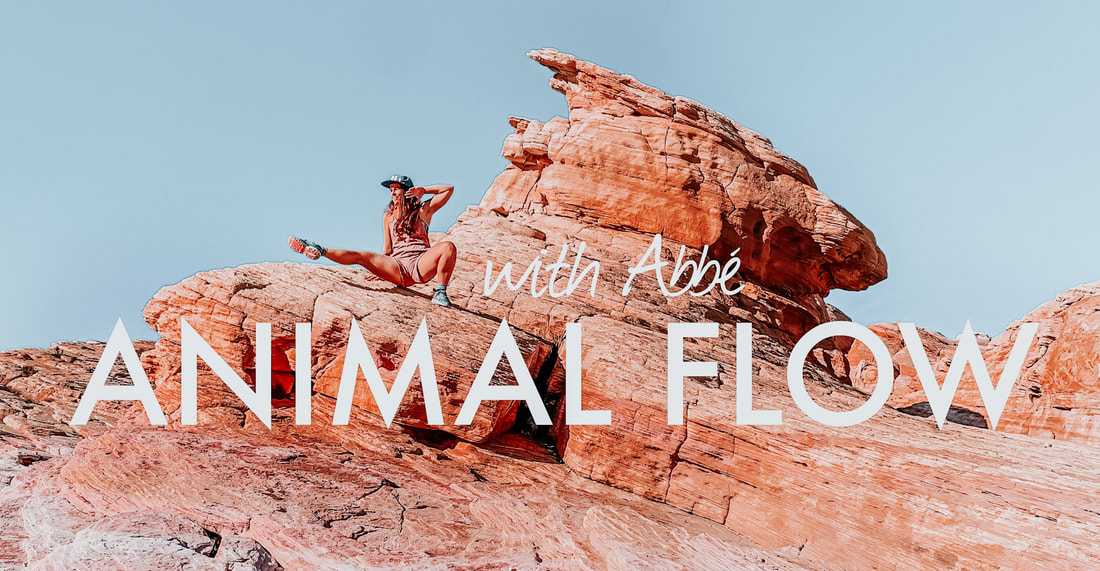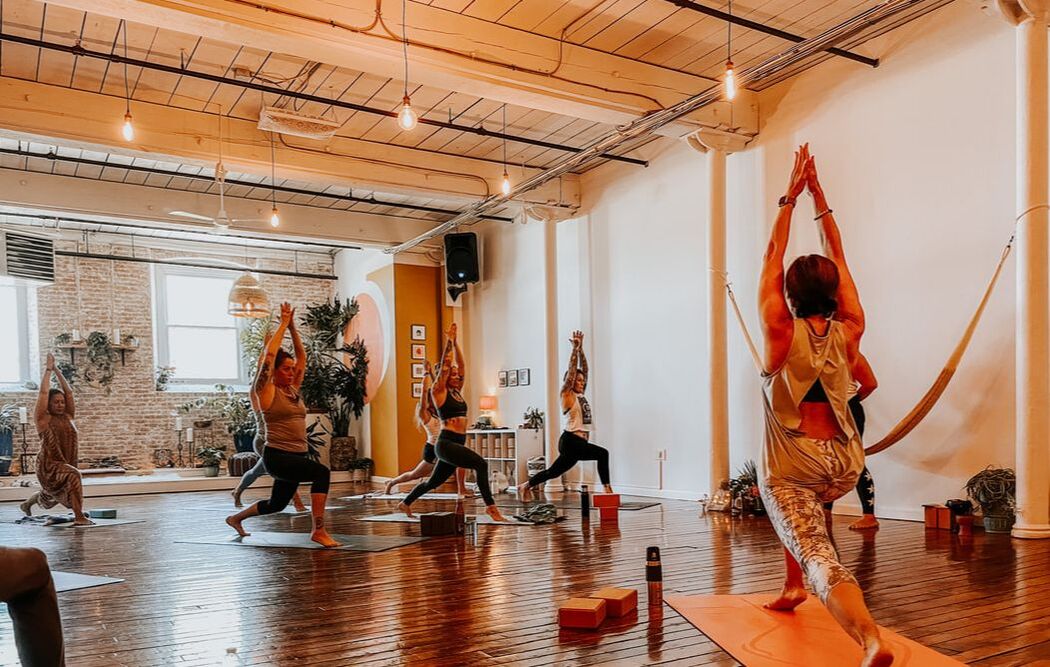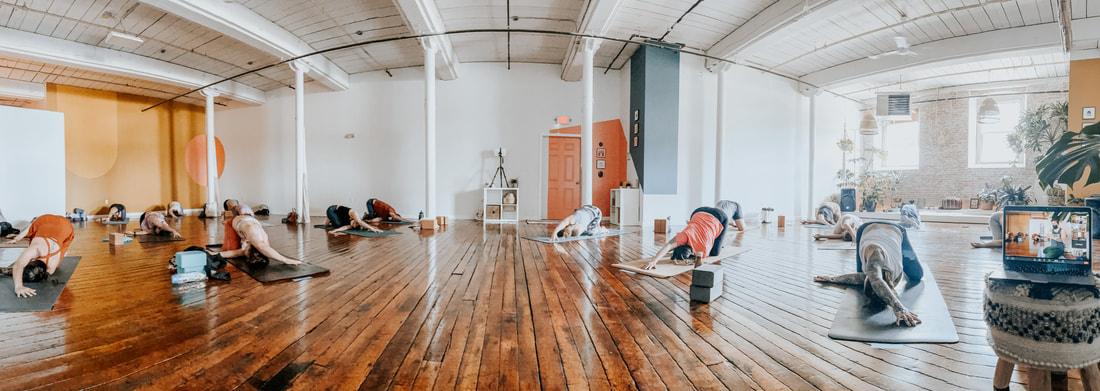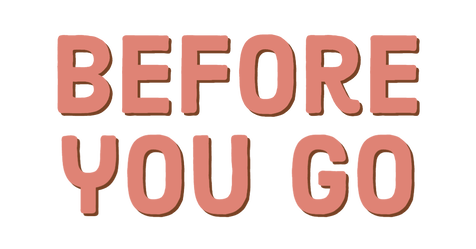|
Chancing are, you've been hearing about the incredible benefits of Animal Flow and Primal Locomotion. Athletes are adding it to their HIIT days, yogis are weaving it into their flows and more and more movers are joining in! Through Animal Flow, discover next level strength and unbelievable agility. Forge the absolute best mobility you've ever have in your life. Why the hype?Animal Flow is an incredibly efficient movement methodology for full-body transformation. Animal Flow is so effective because all of the postures and techniques specifically train and target our body’s fascia... (click below to read the full article)
0 Comments
So, you've signed up for your first yoga class!First, take a moment to pat yourself on the back. You are taking a chance on something totally new. You're embarking on a journey for better overall wellness. Any time we step into unfamiliar waters, there is a feeling of uncertainty and vulnerability- but we promise, it will be so worth it. The cave you fear to enter holds the treasure you seek. Success from the startChances are you've been hearing about all the benefits of yoga, and with good reason. Yoga offers up abundant perks for both our body and mind, from heart health and increasing both muscle strength and flexibility to aiding in mindfulness and conquering stress. Ready to roll out a mat and give yoga a try? We've curated our favorite tips alongside the most frequently asked questions to get you ready for your first yoga experience! Check the Schedule, Read the Class DescriptionsOne of the best aspects of yoga is that there is so much to choose from. We guarantee there is a yoga for every body. Before showing up for your first class, peek through the class schedule and read the class descriptions. If you're a brand-newbie, we recommend trying one of following classes: Solar Flow Foundations, Slow Flow, The Reset, The Fix or the Slow Vibe.
Get ComfyPut on breathable clothing you are able to freely move around in. Workout clothing usually works perfectly. Yoga is practiced barefoot, so you can leave the sneakers and socks behind. You might want to try avoiding super-loose tops, especially for women, since they tend to ride up when you’re bending over toward the floor. Skip applying any lotions to hands or feet right before class so that you don't slip on your mat.
Gather your "Go Bag"Get everything packed and ready before you go. that way when it is time to leave- there is no stress and no excuses. Lucky for us, yoga requires almost zero equipment and most studios will have everything you need already (we personally have everything you need at the studio- yoga mats, knee cushions, blocks and props that you can borrow for class). Pack a water bottle with a closing cap, a yoga mat (if you have one) and small towel. Which yoga mat is best? Steer clear of the super thick, smushy ones. Those are for gym use and will actually make yoga harder. Stick with a mat no thicker than 4mm. If you have sensitive knees, we have have cushions to support them. Arrive EarlyAllot yourself time to arrive early and get fully settled in- at least 15 minute prior to class start time. Leave shoes outside the door and personal belonging in the lobby cubbies. Our teachers are friendly and very accommodating. Let them know this is your first class and they will help you get comfortable in your new setting. Set up in the middle of the roomThis is a BIG one. While we all like to hide in the back of the room for our first few classes, it is actually best to land your mat directly in the middle of the space. This way, you can look in any direction for visual aid from your fellow students and the teacher. If you're tucked in a back corner, you'll be flying blind for most of class. Do some gentle stretchingTime to kill before class starts? Take a moment to do some gentle stretches will deep breaths. This will help you feel more calm and connected to your body by the time class starts. It's totally okay to feel a little lostDuring your first class, it will feel a little bit like there is a dance going on and you haven't learned the moves yet. That is totally normal. We have ALL been there. Every single student was once a brand-newbie, just like you. Be patient and know that each time class will feel more familiar.
It's totally okay to feel challengedAny new movement regiment will feel challenging at the start- and thats a good thing! Challenges are part of the process. They make us stronger and create the lasting transformation we all seek. Some poses may feel "hard" but you will be amazed at how much stronger and flexible you become over time. In yoga we always encourage students to "listen to their body" and take as many breaks as you need if you feel fatigued. Come as you are, we will meet you there, we will grow together. Each class is a little different.As mentioned earlier, there is a yoga style for every body. But this also means that each class is unique. Some classes play music and some are silent. Some teachers move slow, others will flow quicker. Some teachers also like to finish class with a short chant or meditation. If you don't love your first class, be patient. There is always more great options to choose from! Don’t be discouraged after your first classYou might feel overwhelmed after your first session. After all, it was probably a crash course in breathing and alignment. But don’t be discouraged! Remember that anything worthwhile takes time, persistence and and a little curated wisdom from a trusted teacher. Within that framework, nearly anything is possible! “Yoga’s not a religious thing. At its core, it’s about community. Sit back, breath and take it all in. It’s not about how you perform, it's all about what you bring from the practice into the rest of your day.” Do I have to be flexible?Absolutely not. Arrive just as you are. If you're recovering from an injury or have limitations, always consult your doctor first. Yoga will make you stronger, more flexible, more mindful.
Is yoga religious?Yoga is not inherently religious. There are some classes that are more spiritual and some classes that are much less so. All classes will have a component of mindfulness. Make sure to read class descriptions to get an idea of the class vibe.
Can I eat before class?Eating a light snack before yoga is totally fine. Avoid big or heavy meals before class, but if you're hungry don't be afraid to have quick small bite before class.
I have an injury, can I practice yoga?While yoga teachers will help you become more body-aware, flexible and strong, they are not doctors. Always make sure to clear all new exercise regiments with your doctors first. Ready for your first class at Troy City Yoga?Follow the link below to get all the info on our our studio! How to find us, where to park etc..
|
AuthorWe really like to hear ourselves talk. Archives
July 2024
Categories |
|
Questions about your first class?
Click here. |
FIND USWe are located at:
The Commonwealth Landing 1082 Davol Street Fall River, MA Phone: +1 323 800 8599 (text only) Apple maps is still updating their systems. We recommend putting our actual address into navigation, otherwise they may bring you to our former location. |








 RSS Feed
RSS Feed
